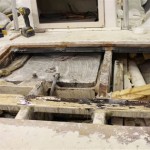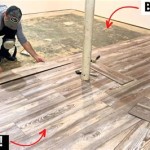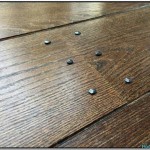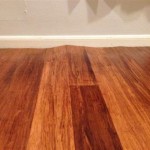Brazilian Cherry Flooring Color Change: A Comprehensive Guide
Brazilian cherry flooring, renowned for its captivating reddish-brown hue and exceptional durability, is a popular choice for homeowners seeking a timeless and elegant aesthetic. However, over time, this beautiful hardwood flooring can undergo a natural color change, evolving from its initial vibrant tone to a richer, darker shade. This phenomenon, known as patina, is a common characteristic of Brazilian cherry and contributes to its unique charm. While some may perceive this transformation as a desirable aspect of aging wood, understanding the causes and potential mitigation strategies can help homeowners maintain the desired appearance of their flooring.
Factors Contributing to Color Change
Several factors influence the color change of Brazilian cherry flooring, understanding these can help homeowners anticipate and manage the process:
1. Exposure to Sunlight
Ultraviolet (UV) radiation from sunlight is a primary culprit behind the color change. Sunlight's powerful rays penetrate the wood's surface, causing oxidation and bleaching, resulting in a lighter, paler appearance. This effect is more pronounced in areas exposed to direct sunlight.
2. Natural Patina
As Brazilian cherry ages, it naturally develops a protective patina—a thin layer of oxidation that forms on the surface. This patina contributes to the wood's rich, darker hue, enhancing its depth and character. While this process is a natural and desirable aspect of aging wood, it can lead to noticeable variations in color across the flooring.
3. Humidity and Temperature Fluctuations
Brazilian cherry, a tropical hardwood, is sensitive to changes in humidity and temperature. These fluctuations can lead to slight dimensional changes in the wood, affecting its appearance. In humid environments, the wood may absorb moisture, causing it to expand and potentially darkening its color. Conversely, in dry conditions, the wood may shrink, resulting in a lighter shade.
4. Cleaning Products and Spills
The use of harsh cleaning products or accidental spills can also contribute to color change. These substances may react with the wood's natural oils, potentially causing discoloration or unevenness in the finish. It's crucial to use pH-neutral cleaners specifically designed for hardwood floors and to promptly address spills to minimize any potential damage.
Strategies for Managing Color Change
While color change is an inevitable part of the aging process for Brazilian cherry, homeowners can implement measures to manage its progression and maintain their desired look:
1. Minimize Sunlight Exposure
Reducing the amount of direct sunlight reaching the flooring can slow down the bleaching effect. Consider using curtains, blinds, or window films to filter out UV rays. Alternatively, rearrange furniture to shield the most exposed areas.
2. Regular Cleaning and Maintenance
Consistent cleaning and maintenance are essential for preserving the beauty and longevity of Brazilian cherry floors. Regular dusting and sweeping remove dirt and debris, while periodic mopping with a pH-neutral cleaner helps maintain a clean and consistent finish. Avoid using harsh detergents or abrasive cleaners that can damage the wood's surface.
3. Protect From Spills and Moisture
Promptly address spills and avoid excessive moisture exposure. Clean up any spills immediately and consider using area rugs in high-traffic areas to minimize wear and tear.
4. Refinishing and Staining
For more significant color changes or to restore the flooring to its original shade, refinishing and staining can be effective solutions. Refinishing involves sanding down the top layers of wood and applying a new finish, rejuvenating the surface and restoring its color. Staining allows homeowners to customize the color of the flooring, achieving the desired shade while preserving the wood's natural beauty.
Embrace the Beauty of Patina
While color change can be managed, it's crucial to remember that patina is a natural and desirable aspect of aging wood. It adds depth, character, and warmth to the floor's appearance, creating a unique and timeless beauty. Embracing the patina's evolution can enhance the overall aesthetic appeal of Brazilian cherry flooring, transforming it into a cherished heirloom, reflecting the history and character of the home.

How To Change The Color Of Brazilian Cherry Flooring Duffy Floors

Before After Changing Colors Dan Higgins Wood Flooring

Before After Changing Colors Dan Higgins Wood Flooring

Design Dilemma Decorating With Brazilian Cherry Red Hardwood Flooring Lantern Lane Designs

Brazilian Cherry Hardwood Flooring S Colors Hardness

How To Update Brazilian Cherry Hardwood Floors Flooring

Before After Changing Colors Dan Higgins Wood Flooring

Design Dilemma Decorating With Brazilian Cherry Red Hardwood Flooring Lantern Lane Designs

Sun Light Causes Cherry Floors To Darken

Brazilian Cherry How To Eliminate The Red Flooring Girl
Related Posts








